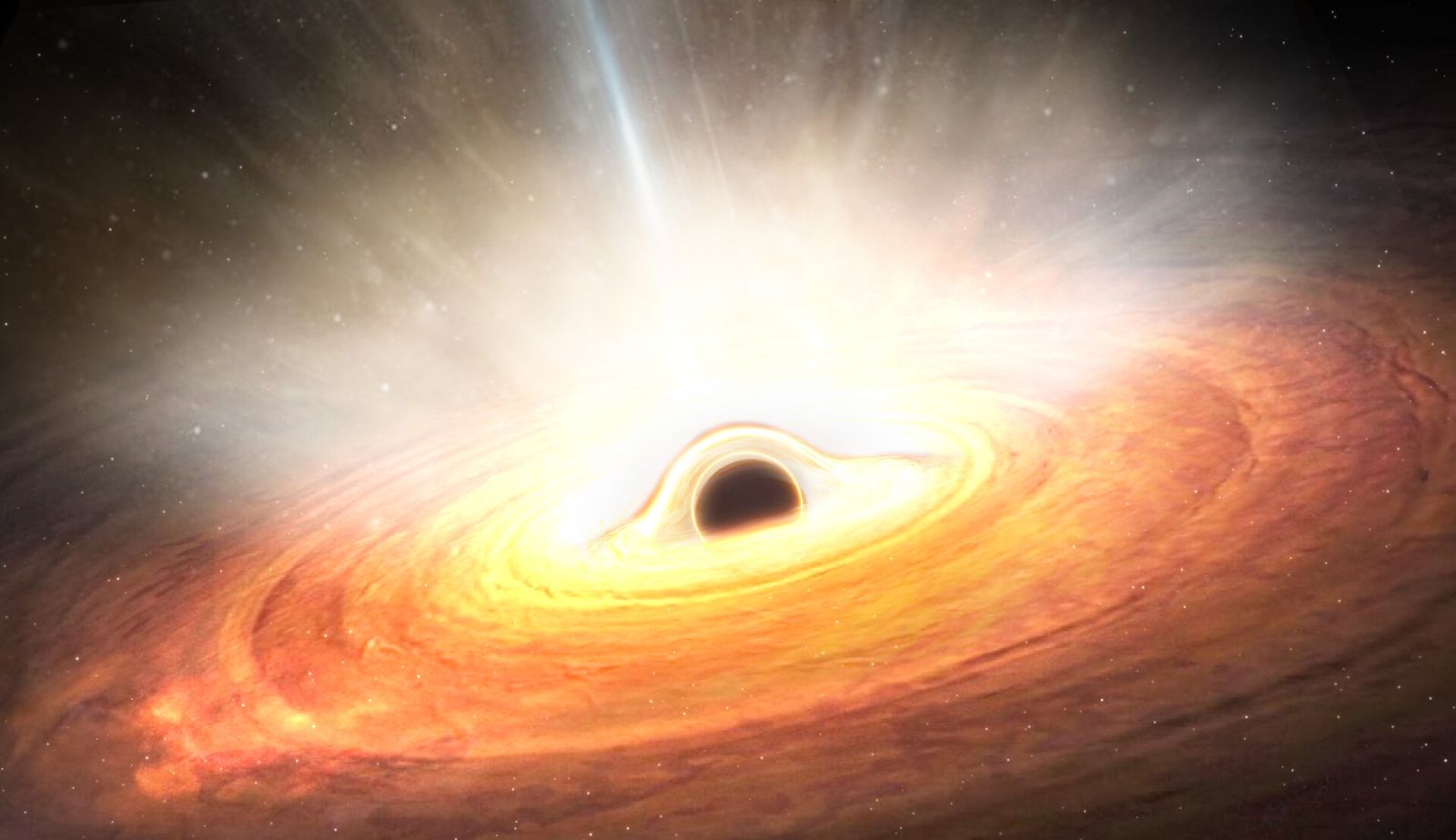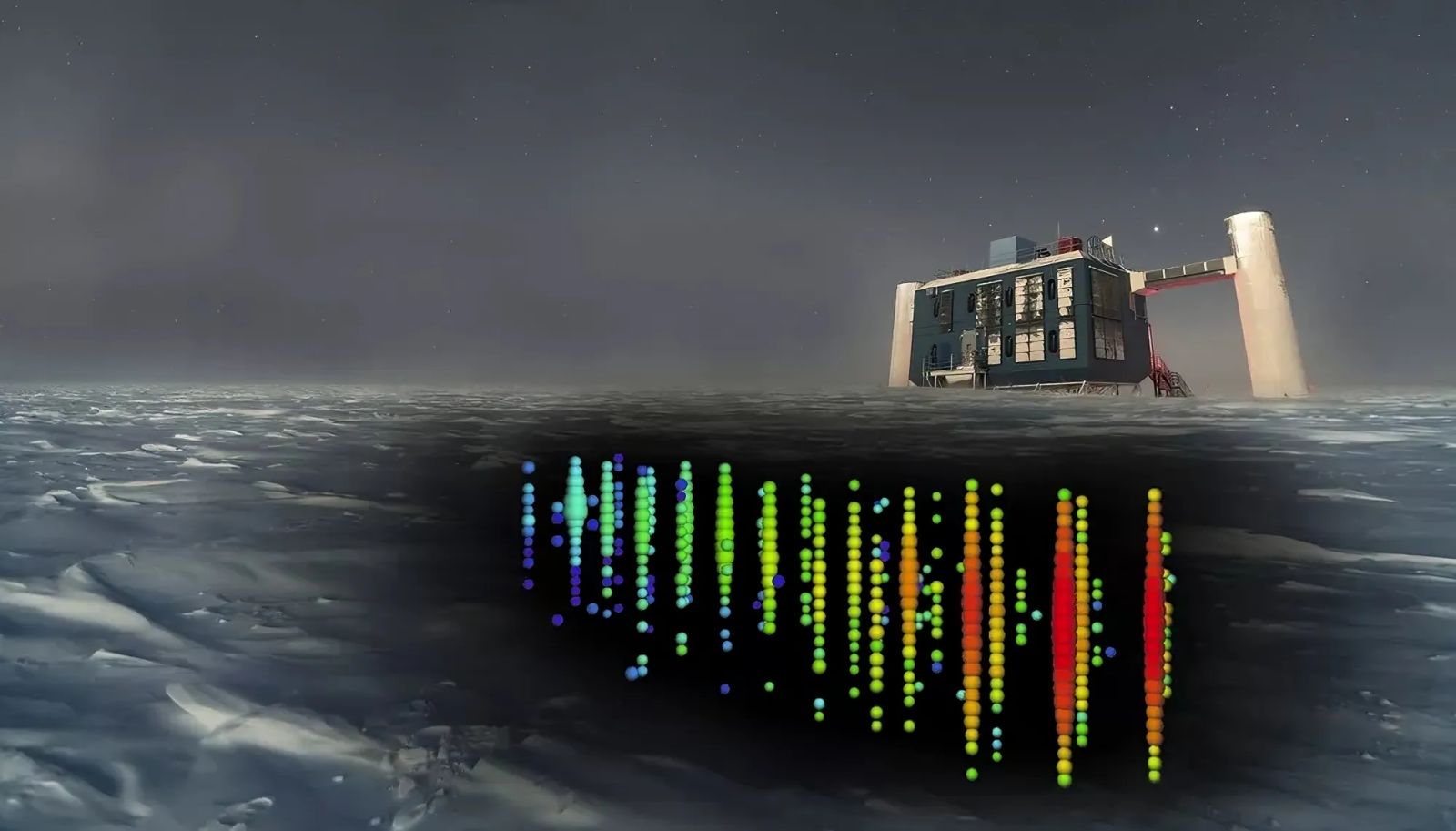Very mysterious neutrinos linked to a black hole ⚫
Follow us on Google News (click on ☆)

Supermassive black holes, found at the heart of galaxies, have a mass several million times that of the Sun. Matter orbits around them, heating up and glowing before eventually falling in.
ATG/ESA, CC BY-SA
A new idea could explain this mystery: helium atoms in the jets around this galaxy's black hole might be broken apart by ultraviolet light. This releases neutrons, which then transform into neutrinos—without producing many gamma rays.
This discovery helps us better understand what happens near the enormous black holes at the centers of galaxies. It could also shed light on the behavior of the black hole at the heart of our own galaxy.
Neutrinos are very peculiar particles: they pass through everything, even Earth, without leaving a trace. To detect them, specialized equipment like IceCube is needed, which monitors the rare moments when a neutrino interacts with water or ice.
The study, published in Physical Review Letters, could change our way of seeing the Universe.

The IceCube observatory, located near the South Pole, includes a surface laboratory and 5,160 detectors buried in the ice between 1.5 and 2.5 km (0.9 to 1.6 miles) deep. The lower part of the image is an artist's impression of a detected event. The color of the spheres indicates the time of signal detection, and their size corresponds to the recorded energy.
© IceCube Collaboration/NSF
Why are these neutrinos so interesting?
Neutrinos travel unimpeded by obstacles and reach us directly from very distant or violent places, such as exploding stars or the vicinity of black holes.
By studying neutrinos, researchers can learn more about these locations that cannot be observed directly with telescopes. For example, those coming from the Sun help us understand the nuclear reactions occurring in its core.
The neutrinos from the galaxy NGC 1068 show that new astrophysical phenomena can be discovered using these particles. They complement what we already observe with telescopes and radio telescopes that capture light, X-rays, or radio waves.
Why does a black hole emit a jet of matter?
At the center of certain galaxies, giant black holes attract surrounding matter, forming a disk. Sometimes, some of this matter does not fall past the black hole's event horizon but is ejected at relativistic speeds, forming a long jet visible far across the cosmos.
These jets are places of extreme conditions: particles are accelerated to speeds close to that of light. Scientists don't yet fully understand the process, but they believe very powerful magnetic fields play a role.
The neutrinos and gamma rays coming from these jets provide useful clues. With them, researchers test their theories to better understand how black holes affect their galaxy.
In the long term, this could help explain how galaxies evolve, as their central black holes seem to play an important role in their development.